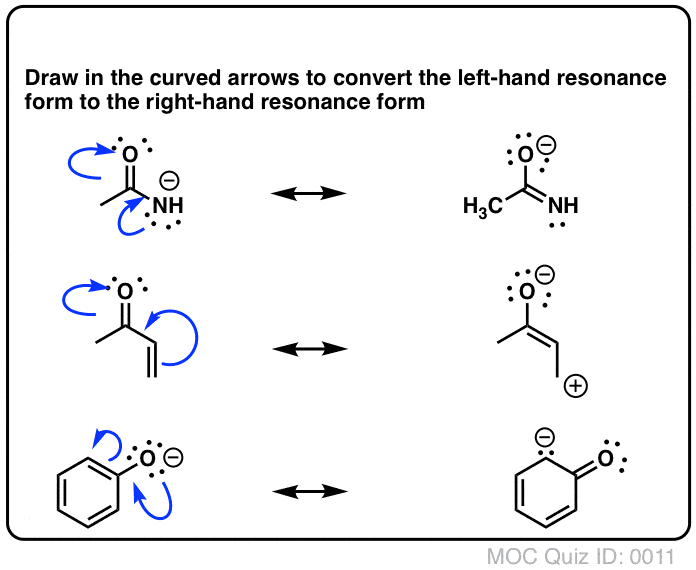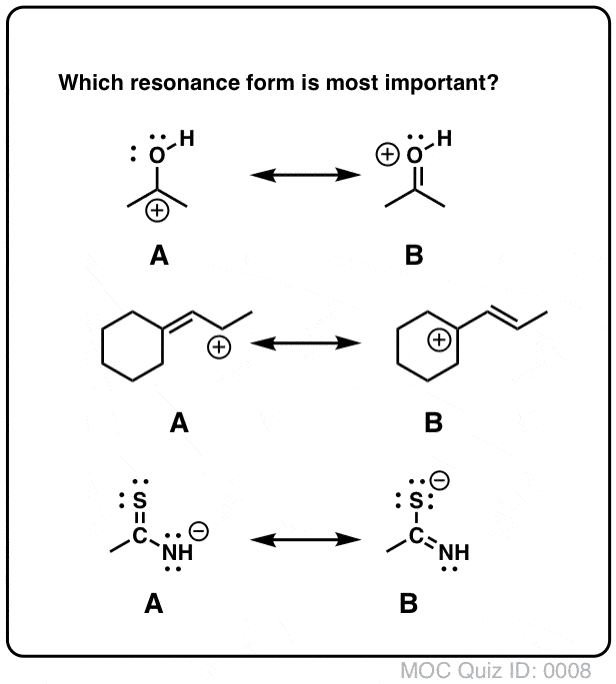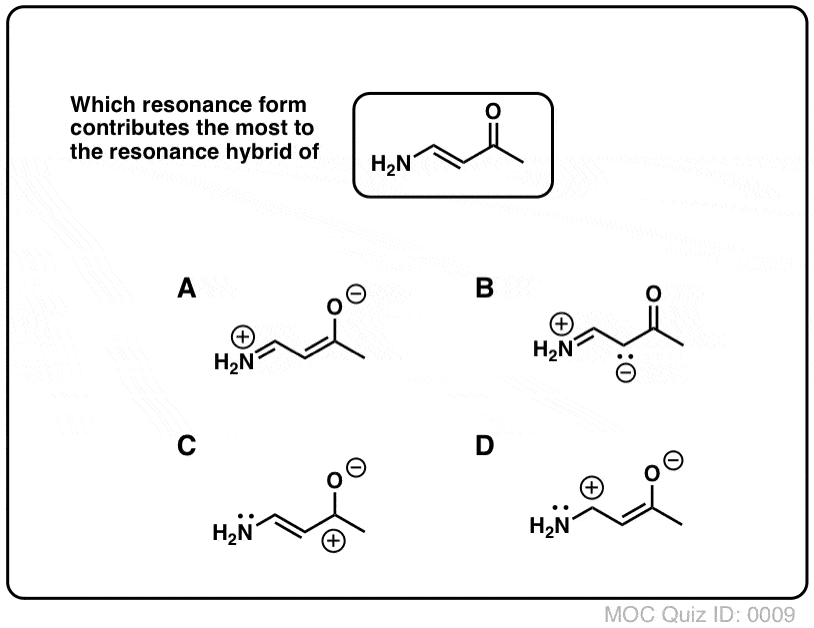
Resonance Structures Practice Master Organic Chemistry
Choose 1 answer: All of the bonds in CO A 3 A 2 − are identical in length and strength. A. All of the bonds in CO A 3 A 2 − are identical in length and strength. The bonds in CCl A 4 are more polar than the bonds in CH A 4 . B. The bonds in CCl A 4 are more polar than the bonds in CH A 4 . Both of the bonds in BeH A 2 have a bond order of 1 .

Resonance in Organic Chemistry — Organic Chemistry Tutor Organic Chemistry Tutor, Forensic
The Resonance stabilization effect (also known as the resonance effect ), as briefly mentioned in Section 1.3, is one of the fundamental concepts of Organic Chemistry and has broad applications. The discussion of the resonance effect heavily relies on the understanding of resonance structures.

How to Study the Resonance Effect in Organic Chemistry 6 Steps
Organic chemistry (Essentials) - Class 11 Course: Organic chemistry (Essentials) - Class 11 > Unit 5 Lesson 2: Resonance Resonance structures Resonance structure patterns Resonance structures for benzene and the phenoxide anion Common mistakes when drawing resonance structures Identifying the correct resonating structure. Stability due to Resonance

draw all reasonable resonance structures for the following species jimmorrisonpaintingpawnstars
Organic Chemistry Date_____ Period _____. Draw all of the reasonable resonance structures for each of the following molecules. a. f. k. p. H b. g. l. q. c. h. m. r. d. i. n. s. e. j. o. t. H2N O CN 2N O NH2 O N CN O NH2 O CN H2N O H2N NH2 O N CN H2N O O O HN HN CN O O OH. Answers to Even More Resonance Practice Problems a. b. c. H2N O H2N O.

Resonance Structures Practice Master Organic Chemistry
As we've seen in previous posts, four key factors that determine the importance of resonance structures in organic chemistry are: Rule #1: Minimize charges Rule #2: Full octets are favored Rule #3: How stable are the negative charges? Rule #4: How stable are the positive charges?

draw the resonance structure of a peptide bond cheaperboschcrevicetool
1. Draw the resonance contributors that correspond to the curved, two-electron movement arrows in the resonance expressions below. 2. In each resonance expression, draw curved two-electron movement arrows on the left-side contributor that shows how we get to the right-side contributor. Be sure to include formal charges.

6.2. Resonance Organic Chemistry 1 An open textbook
1: Basic Concepts in Chemical Bonding and Organic Molecules

organic chemistry Archives Organic Chemistry Made Easy by
About this unit Let's review how to keep track of electrons using formal charges, oxidation states, oxidation-reduction reactions, and resonance structures. We will also go over the principles of acid-base chemistry. Counting electrons Learn Comparing formal charges to oxidation states Formal charge on carbon Formal charge on nitrogen

Resonance Structures Practice Master Organic Chemistry
organic chemistry resonance structures practice from CLC. practice on resonance structures answers o3 for each of the following draw reasonable resonance.. organic chemistry resonance structures practice from CLC. Course. Introductory Organic Chemistry (CHEM 343) 112 Documents. Students shared 112 documents in this course.

Lewis Structures in Organic Chemistry Chemistry Steps
Practice Sets Organic Chemistry II Table of Contents • Online Organic Chemistry II, Chem 360,. resonance anions more stable than anions without resonance Test 1 PS# 2: Acid Base P ractice Set. Organic(Chemistry(2((Jasperse( ( Test(1,(Alcohol(Chemistry(

Resonance Structures Practice Master Organic Chemistry
Practice is ESSENTIAL to mastering Organic Chemistry. You have to be able to apply the skills you are learning. First, complete the Resonance Structures Practice Quiz, and then watch this video where I go over the first three question solutions and explanations step-by-step! (Watch on YouTube : Resonance Practice.

Practice drawing resonance structures organic chemistry ideas in 2022 DRAWING 99
1.3 Resonance Structures - Organic Chemistry I 1.3 Resonance Structures In cases in which more than one reasonable (plausible) Lewis structure can be drawn for a species, these structures are called resonance structures or resonance contributors. Resonance structures can be either equivalent or non-equivalent. Equivalent Resonance Structures

Resonance Structure Practice Worksheet
Resonance structures are required throughout organic chemistry. You'll learn how to draw resonance early in orgo 1, and be tested on resonance intermediates in advanced orgo 2 mechanisms. To help you take away the guesswork I've put together a brand new series taking you through the basics, starting with the question: What IS Resonance, all the.

draw a second resonance structure for the following radical doodleArtDrawingSchool
Resonance Structures Organic Chemistry Practice Quiz Not sure if you've mastered resonance structures? Looking for extra practice? Resonance is a critical topic in your organic chemistry curriculum. After watching the Resonance Structures Video Series test your knowledge with this short quiz below.

️Resonance Worksheet Organic Chemistry Free Download Gmbar.co
Organic Chemistry (Morsch et al.) 2: Polar Covalent Bonds; Acids and Bases 2.6: Drawing Resonance Forms Expand/collapse global location

Determine which resonance structure makes the greatest contribution to the resonance hybrid. I.e
The equivalent ressonance structures seem like the same but there are non equivalent ressonance strutures that occur when the delocalization of electrons is between qualitativity different bonds (they are different because they bond different atoms for instance a nitrogen and a carbon and two carbons) ( 6 votes) Upvote Show more.